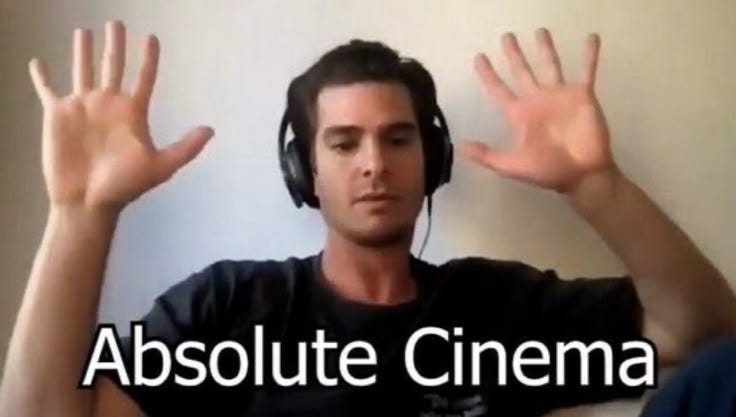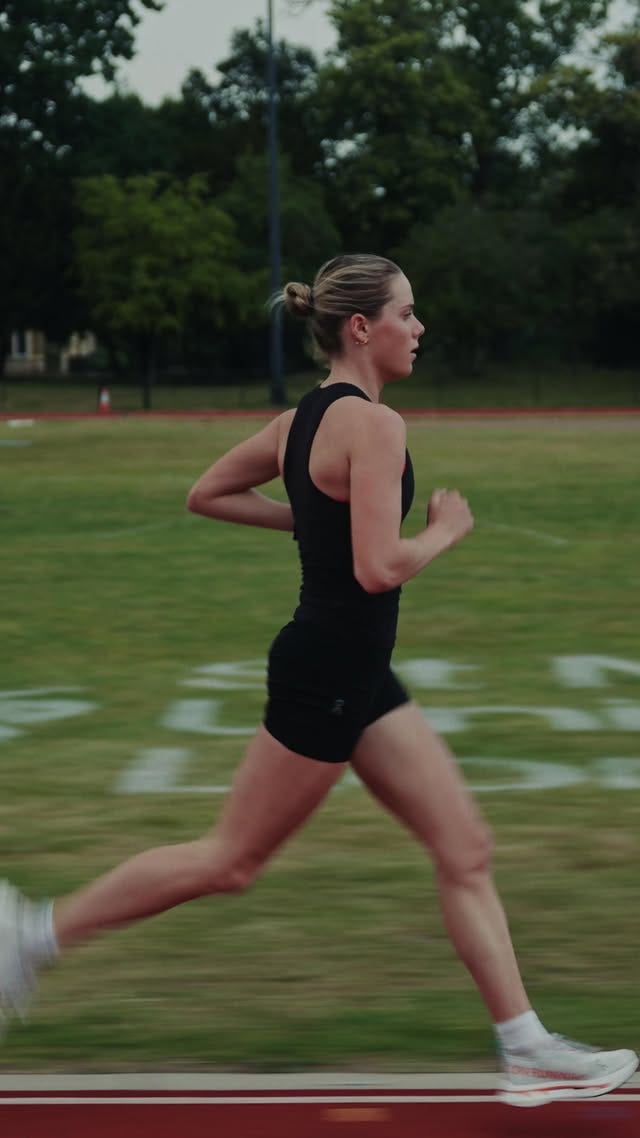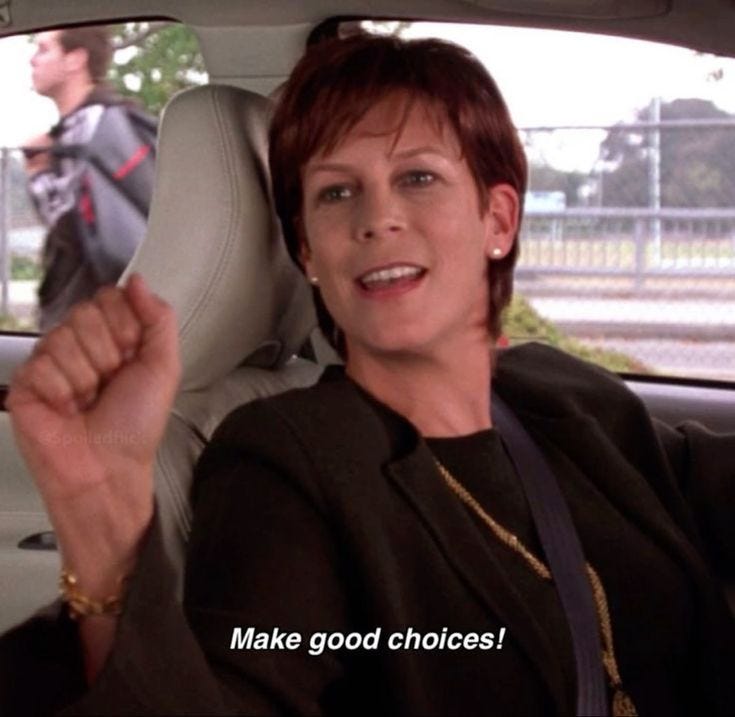The Six Types of Top of Funnel Content & How to Make Them
Part two of our content funnel four part series
Howdy readers!
Last Substack, we talked about why thinking in funnels matters. This week, we’re diving into what can be the easiest and hardest part of the funnel: getting people to stop scrolling in the first place.
I want you to think about Top of Funnel as the movie trailer.
You know, when you watch a movie trailer and think, “That looks so good, we should go see it”
That IS your top of funnel. It’s not the full movie, it’s not the sales generator, it’s the movie trailer. It’s about getting discovered, building visibility and making people want more.
When you’re having non-verbal phone time and an absolute banger comes up on your FY feed.
Top Of Funnel Content Isn’t About You
Top of funnel works when it creates an “aha moment” that split second where someone thinks “I’ve never thought about it that way before” or “that’s exactly what I’m experiencing” or subconsciously thinks I want who I become by buying that.
Most brands get this wrong because they think top of funnel is about them. “Here’s who we are, here’s what we do, here’s why you should care.”
Nobody cares yet. They don’t know you.
Top of funnel content that works is about them, not you. It challenges their thinking, reflects their experience, or gives them something valuable or engaging before you’ve earned the right to ask for anything back.
There are six ways to do this. I call them lenses because each one gives you a different way of looking at the same core content pillars and messages.
Your brand strategy doesn’t change; how you frame it for discovery does.
The Six Top of Funnel Lenses
LENS 1: Aspirational Stories
Strategic Intent: Create desire and emotional connection through aspiration.
People don’t buy products, they buy better versions of themselves. Aspirational content shows them what that looks like.
Story Structure:
Hook: Opens with a visual or descriptive demonstration of the ideal outcome or desired state.
Build: Develops the emotional experience and benefits of achieving this outcome.
Climax: Creates a moment where aspiration feels achievable or relatable to the audience.
Resolution: Connects the audience to the possibility without hard selling or pressure.
Example: July Suitcase
Why this works: It shows people what’s possible and paints a picture of the outcome they desire.
The key is making it feel achievable, not fantasy. If it seems too perfect or too far away, they’ll scroll past thinking “that’s not for me.” (Unless you’re high-end luxury, where your brand is exclusivity).
LENS 2: Relatable Micro-Moments
Funnel Stage: Top of Funnel - Discovery.
Strategic Intent: Create instant connection through shared experience.
Describe the specific moment or situation your audience is experiencing. The more precise you are about their experience, the more they’ll feel understood.
Story Structure:
Hook: Opens with a specific situation or moment that the audience immediately recognises from their own experience.
Build: Amplifies the frustration, challenge, or emotional weight of this shared experience.
Climax: Provides validation or acknowledgment that makes the audience feel understood.
Resolution: Builds solidarity or hints at the possibility for improvement within themselves.
Example: On
Why this works: When you nail the specifics of their experience, they stop scrolling because they think “omg this is so me” “this content hits hard”. You connect with people emotionally, and how it shows up in their day-to-day (symptoms).
LENS 3: Educational Quick Wins
Funnel Stage: Top of Funnel - Discovery.
Strategic Intent: Provide immediate implementable value.
Give them something they can use today. Something specific they can implement that will make their life easier or solve a problem they’re facing right now.
Story Structure:
Hook: Opens with promise of specific, actionable solution or improvement.
Build: Explains the solution in simple, easy-to-follow steps.
Climax: Delivers the “aha moment” where the solution becomes clear and achievable.
Resolution: Encourages immediate implementation or sharing.
Example: Friends That Invest.
Why this works: When you give people something they can implement immediately, you get the immediate dopamine of learning and getting value. If they do it and see results? They’ll be coming back for more.
LENS 4: Trending Cultural Moments
Funnel Stage: Top of Funnel - Discovery.
Strategic Intent: Leverage cultural waves for reach and shareability.
Use trends when they authentically connect to your brand message. The trend should enhance what you already talk about and give another style to your “what”, not replace it.
Story Structure:
Hook: References current trend, meme, or cultural moment for immediate recognition.
Build: Connects the cultural reference to the audience’s specific situation or context.
Climax: Creates an unexpected but logical bridge between the trend and their reality.
Resolution: Designed for engagement, sharing, or cultural participation.
Example: Royal Armouries Museum.
Why this works: Trends work when you take what you already talk about and put it in a format that’s hot right now. The algorithm favours trending content, which gets you in front of new audiences. But the connection has to feel natural.
The test before you post: Could you have made this content without the trend? Does your audience know of this trend? If the answer is no, if the trend is the only reason this content exists, don’t post it.
LENS 5: Controversial Statements
Funnel Stage: Top of Funnel - Discovery.
Strategic Intent: Disrupt thinking and create engagement through bold perspectives.
Challenge what everyone thinks is true. Controversial content can spark outrage and be a difficult one for brands to align with their audience. However, what is “controversial” can still be light-hearted, like this example below.
P.S. If you have a controversial take but you don’t stand behind it, and it will give you a vulnerability hangover - again, don’t post it.
Story Structure:
Hook: Opens with a bold statement that challenges conventional wisdom or common beliefs.
Build: Presents supporting evidence or an alternative perspective for the controversial position.
Climax: Creates a moment where a controversial view begins to make sense or seem valid.
Resolution: Invites reconsideration of assumptions or engagement with a new perspective.
Example: Ecosa “Do you use a top sheet or no top sheet?”
Why this works: When you challenge what people think they know, they have to stop and reconsider. This creates a pattern interrupt. But you need to actually believe your take and be able to back it up, or in this case, make it relate to your brand and what you do (i.e Ecosa sells bedding).
Be controversial because your experience has shown you something different, not just to get attention.
LENS 6: Pure Entertainment
Funnel Stage: Top of Funnel - Discovery.
Strategic Intent: Build brand affinity through entertainment value.
Make content purely because it’s funny, relatable, or entertaining. No teaching. No selling. Just social content that’s… social.
Story Structure:
Hook: Opens with an immediately funny, absurd, or highly entertaining element.
Build: Escalates entertainment value without educational or promotional messaging.
Climax: Reaches peak entertainment moment designed for maximum shareability.
Resolution: Focuses on brand affinity and engagement rather than conversion.
Example: Fayt the Label.
Why this works: Not every post needs to teach or convert. Entertainment builds likability. People follow brands they like, not just brands they learn from. The balance matters, though all entertainment makes you a meme account and you end up with a whole lot of followers for the lols, not for the sales.
What’s Next
You got them to stop scrolling. Your post got 50,000 views. People are engaging. Maybe they even followed you.
Now what?
This is where the sticky part gets for brands and Founders. You get the attention, but don’t know what to do with it. So you keep chasing viral moments, posting more top-of-funnel content, hoping the next one hits bigger. Meanwhile, that audience you built isn’t moving any closer to actually buying.
You can’t stop the scroll forever. At some point, you need to build trust.
Next week: middle of funnel content. How to turn attention into authority without making every post a sales pitch.
See you next week.
Or if you want to talk through your content strategy now, grab time in my cal:
Until next week,
KJ








This is underrated for how useful this is for driving marketing performance. Thanks for sharing Kim!